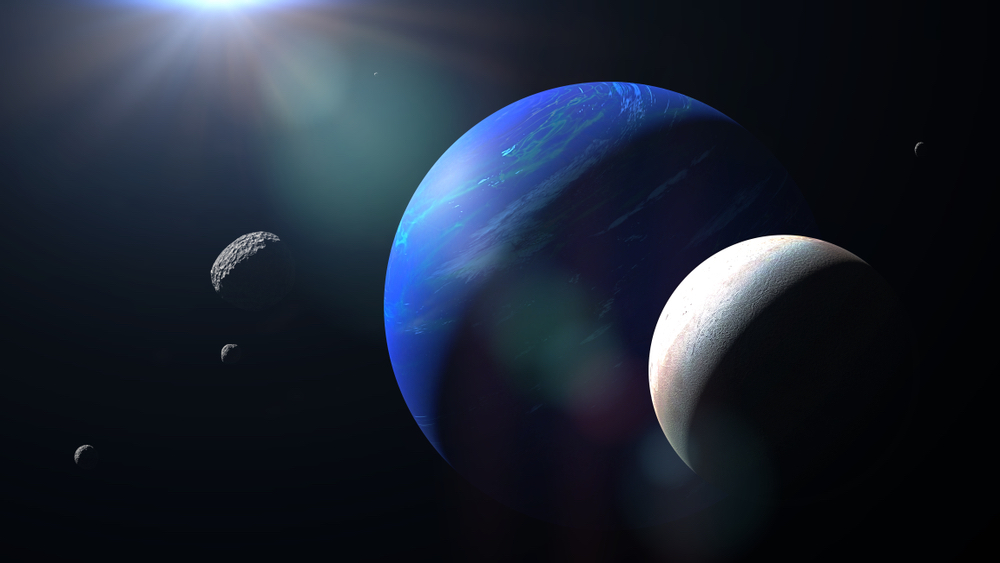
If you’re an astrology enthusiast, you’ve undoubtedly encountered the term “retrograde.” It’s mostly used to refer to Mercury, the swift-moving planet of technology, contracts, and communication. Mercury retrogrades have been blamed for everything from broken cellphones to lawsuits, but nearly every celestial body experiences this phenomenon when seen from Earth. But what do astrologers mean when they talk about retrogrades, and how do retrogrades affect our two furthest planets, Neptune and Pluto? You may find the answers to these questions about Neptune and Pluto retrogrades both fascinating and surprising.
The Science and Astrology of Retrogrades
Planets don’t actually move backward when they’re in retrograde. The term is short for “apparent retrograde motion,” a phenomenon occurring when Earth passes other planets during its 365-day orbit. Just as a car appears to temporarily move backward when we pass it on the road, the planet looks like it’s moving from west to east in our night skies instead of the usual east to west.
Astrologers link retrogrades to changes in a planet’s normal energies. Depending on who you ask, these planetary influences are either weakened, frustrated, or turned inward. Neither Neptune nor Pluto can be seen with the naked eye, so ancient astrologers didn’t know about them or track their movements. Discovered in 1846 and 1930 respectively, these celestial bodies were eventually incorporated into modern astrology.
Neptune: What Dreams May Come
The Greeks knew the god of the sea as Poseidon, son of Cronus. The Romans called him Neptune, child of Saturn and brother of Jupiter and Pluto. This outermost major planet in our solar system is a cobalt blue ball composed of silicates, metals, hydrogen, helium, frozen ammonia, water, and methane. This strange world lies 2.78 billion miles away from our sun and takes 165 years to complete its orbit.
To astrologers, Neptune represents human dreams and fantasies. Mystica Astrology explains that it’s tied to our imaginations, spurring groundbreaking works of art, literature, fashion, and music. Yet its natal chart placement can also point to potential areas in which we may delude ourselves.
Neptune retrogrades about once a year and typically spends six months in this state. According to Astrology.com, the next Neptune retrograde starts on June 22, 2020, and lasts through November 28. Like other outer planets, its retrogrades are thought to be less intense. AstroStyle says that these periods can prompt us to dig deeper into our minds and question our spiritual beliefs, but we should look out for denial and self-delusion.
Pluto: The Shadowy Underworld King
To the ancient Romans, Pluto was the formidable ruler of the underworld, god of wealth, and judge of the dead. To astronomers, Pluto is a significant Kuiper Belt object that’s best described as an icy rock. Located 3.6 billion miles away from our Sun, the dwarf planet completes its orbit in 248 years. This sub-zero planet takes between 14 and 30 years to travel through each zodiac sign, and this irregularity is partially due to an extremely elliptical orbit.
Astrologers associate Pluto with the power of transformation: life, death, and rebirth. In a person’s natal chart, it speaks to that individual’s unconscious mind and deep secrets. This planet experiences apparent retrograde motion once per year, lasting about six to seven months. The next retrograde starts on April 25, 2020, and ends on October 4. AstroStyle suggests that this period offers opportunities to reexamine old fears, restricting beliefs, and unconscious detrimental patterns.
The Farthest Planets and Their Unseen Effects
Distant objects can be hard to perceive or perhaps not even seen at all. Hidden from human view for thousands of years, the outer planets Neptune and Pluto offer a wealth of deeper astrological meaning. Neptune and Pluto retrogrades change their astrological energies, but this isn’t always a bad thing. These times can be used for exploration, reflection, and making changes in one’s life.

